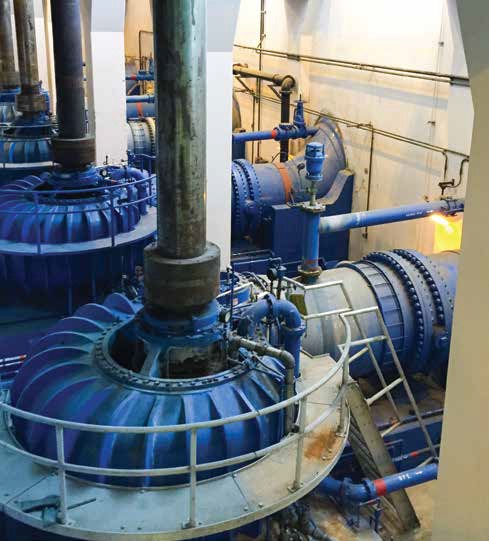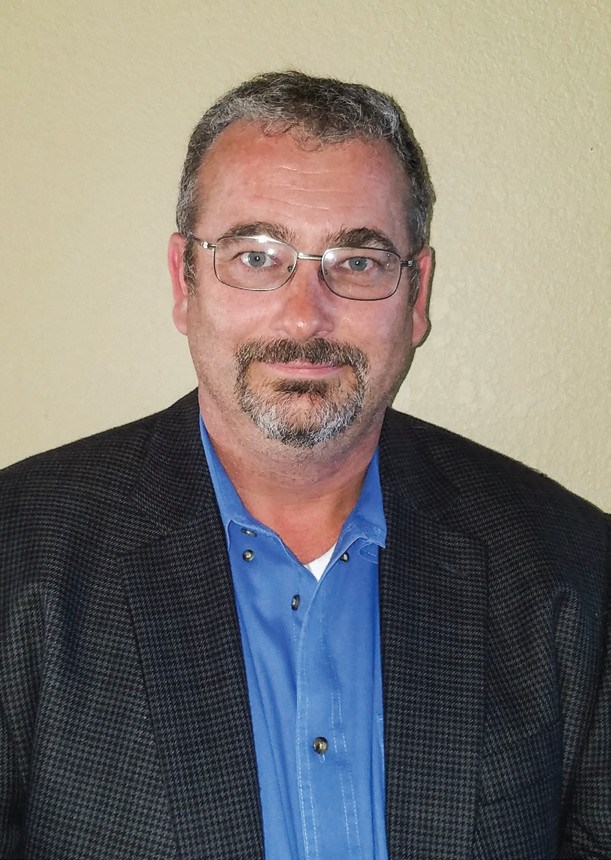Determining the cost of failure for critical plant equipment is an art that Robert Bishop has learned through decades of experience working at huge and small facilities. The plant manager for Chemtrade Syracuse, a division of the international chemical production company that produces sodium nitrite as a food preservative, uses modern technologies and a robust maintenance system to make key decisions about plant reliability.
And it all starts with collecting data and understanding the system.
“For things that move, like a pump, you should get data while it is in use,” Bishop recommends. “If you are talking about a valve that does not get moved very often, you may be limited on the amount of data and the type of data you can collect. Valves are a bit different. Depending on the application, it may be acceptable to have some leak in a valve. If not, they can be checked with ultrasound If there is a temperature difference in the process stream, then it may be a good idea to use thermography to confirm that a valve is holding. When we are talking about the general care and maintenance of valves, the biggest thing is making sure they are stroked on a regular basis.”
Bishop has worked at huge facilities like Bristol-Myers-Squibb and now runs a plant of only about three dozen people.
“Some people think bigger means more opportunity,” he said. “I once walked away from a large company where everyone had a very narrow responsibility. I like to do a lot of different things, so working at a smaller site is a strategic thing for me. There are times when the operations manager is on vacation and I fill in for her, so having a smaller site we all wear a lot of hats. My earlier belief of ‘bigger is better’ was the wrong direction for me.”
But with varied experience, Bishop has learned that a basic balanced maintenance philosophy is the most effective approach.
“We have a lot of valves that may not need to be turned for five or 10 years,” he said. “If you have a piece of equipment that only requires isolating at an extended period of time then you may have to exercise that valve. But when you need it, it better work. You may exercise the valve on a preventive maintenance schedule just to be sure it is moving. Having the right balance is important and goes a long way.”
Bishop says the cost of maintaining valves and other plant equipment should strike a balance with the economic benefits.

“You can say, what is the best way of making sure the pump or valve never fails, but that may be a costly thing to do,” he explained. “In reality, we have to understand what is the cost of the failure, and how much are we willing to spend to prevent a failure from occurring.”
Sometimes, he said, that means the best answer is to do nothing and wait for it to fail.
“If it is not going to hurt anyone and if there is no environmental or safety impact from a failure, you either have the tolerance to take the downtime to fix it or maybe you are not operating at full capacity and taking a day of outage to fix something is not a big deal,” Bishop said. “A lot of times the run-to-fail approach can be appropriate, but you must be sure you have the right spares to turn it around quickly. In order to have the right balance, you have to have those options available to you.”
Using technology to help make that decision can make all the difference.
“You need a system where you are collecting the vibration, thermography or ultrasound data or you have vendors you work with who can do that for you so you can understand the health of the system,” he explained. “This may lead to an understanding, for example, that the valve will last five years and then will fail and that is an ok understanding in some cases. Sometimes you know it will fail and you will just deal with it when it does.”
It is important to have an understanding of when the equipment might fail, and determine whether that is acceptable, Bishop said.
“I took a class with someone who worked at a glass manufacturing site and their next scheduled outage was 40 years out. That is not something I am used to. I think this is rare,” he said. “Typically, it is 10 to 15 years. Those type of places start something and do not want to ever take it down, so they have all kinds of redundancies. Most of the places where I have worked were not that critical that we needed full redundancy on all mechanical parts. If you know a failure is imminent and if the failure is acceptable then what is the cost? This is all assuming no one will get hurt or you will not contaminate a waterway or something like that.”
Once the cost of failure is determined, a plant can decide to either replace the equipment, or study the data along the way to build an understanding of the health of the machines.
“A lot of our valves and pumps fall on two different ends of the maintenance spectrum,” Bishop explained. “You end up with some that are duty fit well and will run for years or decades without any issues. Others are either installed in bad situations or not correctly for the current application because things evolve over time and equipment is reused. Those have a shorter life, so they require different maintenance approaches.”
One way we can cover the spectrum, Bishop said, is by having a good predictive program that looks at vibration on a regular basis. Also, having good lubrication practices is crucial.
“In larger systems, it is important to take oil samples and pay attention to the information of the oil analysis,” he said. “In small systems it may be more about monitoring by use or some sort of frequency. If the levels are correct, be sure to maintain the system in a clean environment, and see if there are any external leaks. It is also important to make sure pumps and their associated gearboxes are contributing to the overall success of the organization.”

People, Culture, and Change
A passion for people and equipment has allowed Bishop the opportunity to find jobs that focus on a balance of reliability and systems improvement. “I enjoy dealing with the equipment side of things, but I also love to deal with people,” he said. “I realized early on that this is part of who I need to be professionally.”
With a degree in mechanical engineering from the University of Rochester (New York) and a Master’s of Science in bioengineering from Syracuse University, Bishop had many career options. He worked in validation for 12 years and then had to make a decision to either be a lifer or diversify.
“I knew that if I did not do something soon, the decision would be made for me,” he said. “The opportunity came for a role with a major pharmaceutical company, so I took the leap. That job allowed me to balance my technical skills with strong management skills to launch and implement many successful reliability programs. I enjoy having an opportunity to enhance and improve systems. No matter where you are on the continuum there is opportunity to improve. Technology is always changing. I love researching solutions to problems, evaluating the best path forward, and implementing improvements. Reliability has an endless supply of opportunity.”
Bishop said he believes strongly that action is more impactful than ideas.
“My overall reliability philosophy is to create robust systems, to educate your team, and then get out of the way and let them be successful,” he said. “People are more important than knowledge. I try to remind myself that it is great to have a lot of ideas, but if we do not actually do anything, we are never going to go anywhere. You cannot just drag your feet forever. You can force people to do what you want, but if you do not invest in the people and acknowledge that they are the ones that make things happen, you are not going to see that benefit for the long run.”
Bishop’s connection with people extends to mentoring others to reach their goals and succeed. He remembers an example when a young woman within a different organization at the site had an interest in reliability, but did not have any background in it.
“Over the course of about a year we had some meetings, lunch-and-learns, and many discussions on the topic,” Bishop said. “I provided her with reading material and links to webinars that would help her to learn. She recently sat for her Certified Reliability Leader exam and passed. I am very proud of her and know that someday she will have a more formal role in the field of maintenance and reliability.”
Bishop enjoys solving day-to-day issues. He drives root-cause analysis, launches new systems, and has been involved in upgrades to CMMS systems. One of his most successful best-maintenance practices is reporting by exception.
“I do not need to know when everything is going well. I need to know when things are not going as planned so I can communicate to the larger organization,” Bishop said. “I try to look for what is not supposed to be there. For example, when you look at the integrity of the data in our CMMS system, you can create all the reports you want. Sometimes, it is beneficial to go look for things you do not expect to find. For example, I do not expect to find a blank priority field. But if I write a query for that and pull up all work orders that have blank priority fields I can ask ‘Why?’”
Bishop focuses on high-value work. “We all could spend 90 hours a week working and still not get everything done. We have to identify where to put our effort.”

Reliability Programs That Make a Difference
Throughout his career, Bishop has driven many successful reliability programs.
He implemented one for paperless work orders that saved the company 120,000 pages of paper/year and also saved four full-time equivalent (FTE) efforts. However, he repurposed the people and no one lost their job. The program made valuable data available in real time while improving the quality of work.
He also drove a year-long PM-optimization program and implemented a lubrication-enhancement program that allowed closed systems, consolidated lubricants, and visual-management improvements.
The lubrication program focused on a site that has been around since 1943. It was originally a facility that produced penicillin during WWII and had gone through a lot of evolutions through the decades. Many of the lubricants on site were not needed. In fact, some of the drums of oil were 10 to 12 years old.
“There were lubricants with slow turn, and it just was not ideal,” Bishop recalled. “We did not know where everything went. A maintenance technician, who was with the company for 30 years, had a cheat sheet and knew which oil went in which gearbox. It worked great, but it was not a very robust system. I put together a team that analyzed where everything was being used, and then we brought in one of our vendors who helped us consolidate.”
The program allowed the site to downgrade from 46 lubricants to just eight oils and four greases.
“We closed up the systems provided by the manufacturer on our gearboxes and level indicators. In most cases we used a sight-glass tube,” Bishop explained. “We closed the systems on the larger ones and installed Quick Connect so we could use a filter cart. We installed sample ports with dip tubes, and we started doing oil sampling near where it is being used in the gears and not just in the bottom of the gearbox. We started the oil-sampling program to drive increased reliability. We were not necessarily having a lot of failures because of poor lubrication, but we had a lot of practices that were not ideal.”
The program included taking steps to do things through visual management. Now, gearboxes have a tag that indicates what is inside. It also identifies the viscosity and the manufacturer, and the same tag is on the oil container that is brought out to the field. An identical tag is on the oil-filtration skid.
It took about a year to transform into a closed system so that no moisture or particles find their way into the gearboxes. “It was definitely worth the effort,” Bishop said. “We now have one of the better lubrication programs that I have ever seen. Nothing is perfect, but we now have a very robust system.”

Challenges with Implementing Changes
Bishop said he has always enjoyed change and the positive impact it can have on reliability systems. But sometimes it is difficult to convince others that change is a good thing.
“The biggest challenge is convincing people that improving systems and reducing workload will not result in reduced headcount,” Bishop said. “I point to my track record, and it speaks for itself. My goal is never to get rid of people. The people I work with know they can trust me. I would not say something and then do something else. For people who do not know me, I am very proactive about addressing this.”
Bishop relies on tools such as a Best In Class (BIC) weekly meeting where all crew supervisors get together with a common goal to continuously improve and help each other. They use other tools such as ARMED software, which can identify key performance indicators and reliability data such as a top-10 bad-actor list. Bishop also uses his experience in the field of equipment qualification and validation that has provided him with a robust understanding of documentation, quality systems, and equipment.
The greatest tool that Bishop uses is his ability to connect people with culture and change. “I always want to improve,” he said. “I always appreciate the people involved, and I know what it takes to change culture. It is not always easy, but it is always possible. It does not have to be a huge project. It can be small, incremental things. But I am a supporter of change. We must always strive to improve.”
Advice for Young End Users
Bishop has some advice for young end users entering the workforce.
“Pick one thing and get it right,” he advised. “If you want to improve your maintenance system do not try to do it all at once. For example, if you have had problems with valves in the past and you are trying to improve that, start with one type of valve, or one application or once piece of equipment and get it right. Once you get it right, roll it out into the bigger picture.
“It is easy to go full force ahead and then you have 50 instances of things that are almost as good. If you got it exactly right on the first one, sometimes that involves several types of integrations, that could be the type of valve or the operation of the valve or the maintenance for the valve… whatever it is, just get that right before moving on.”


